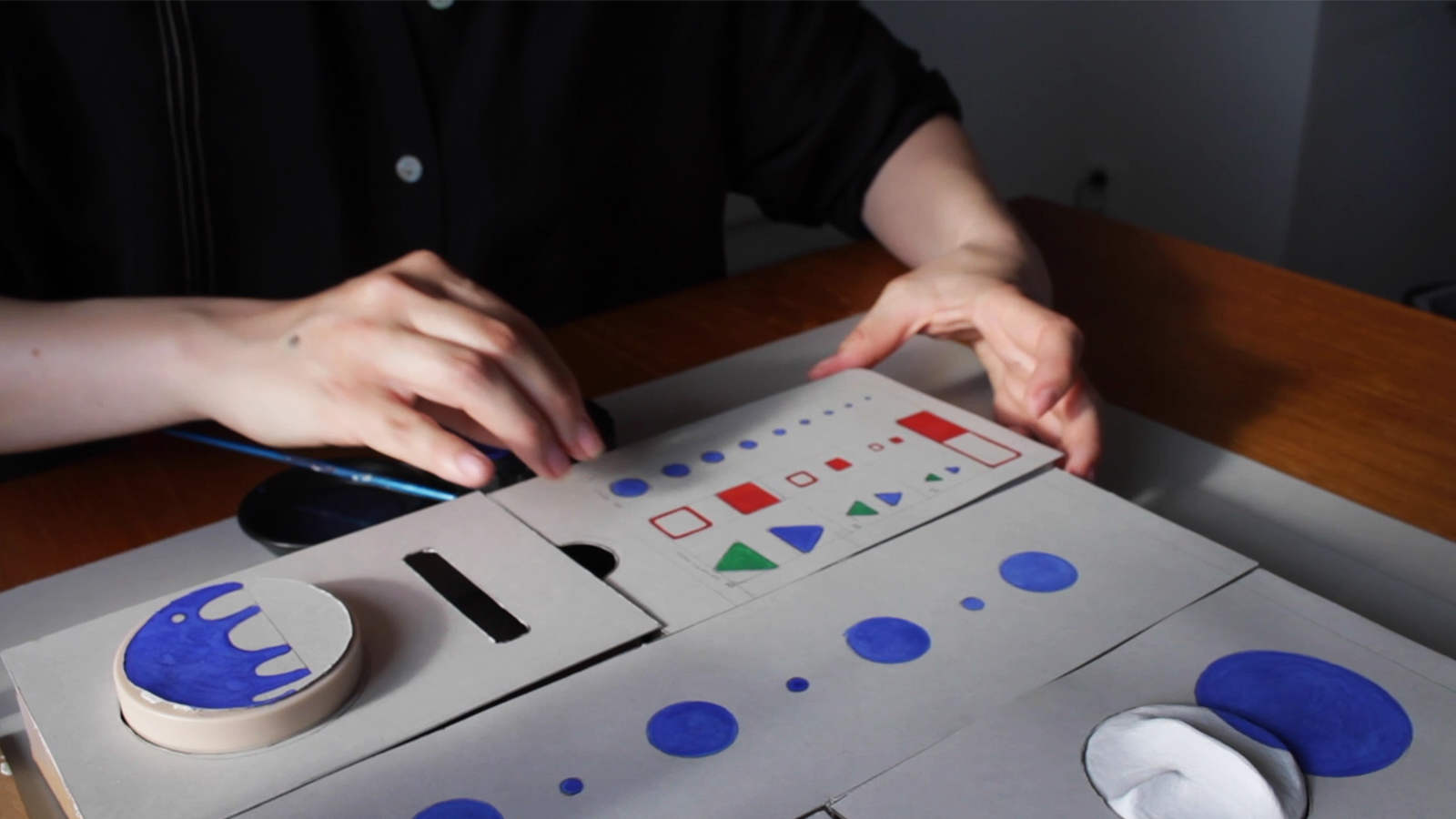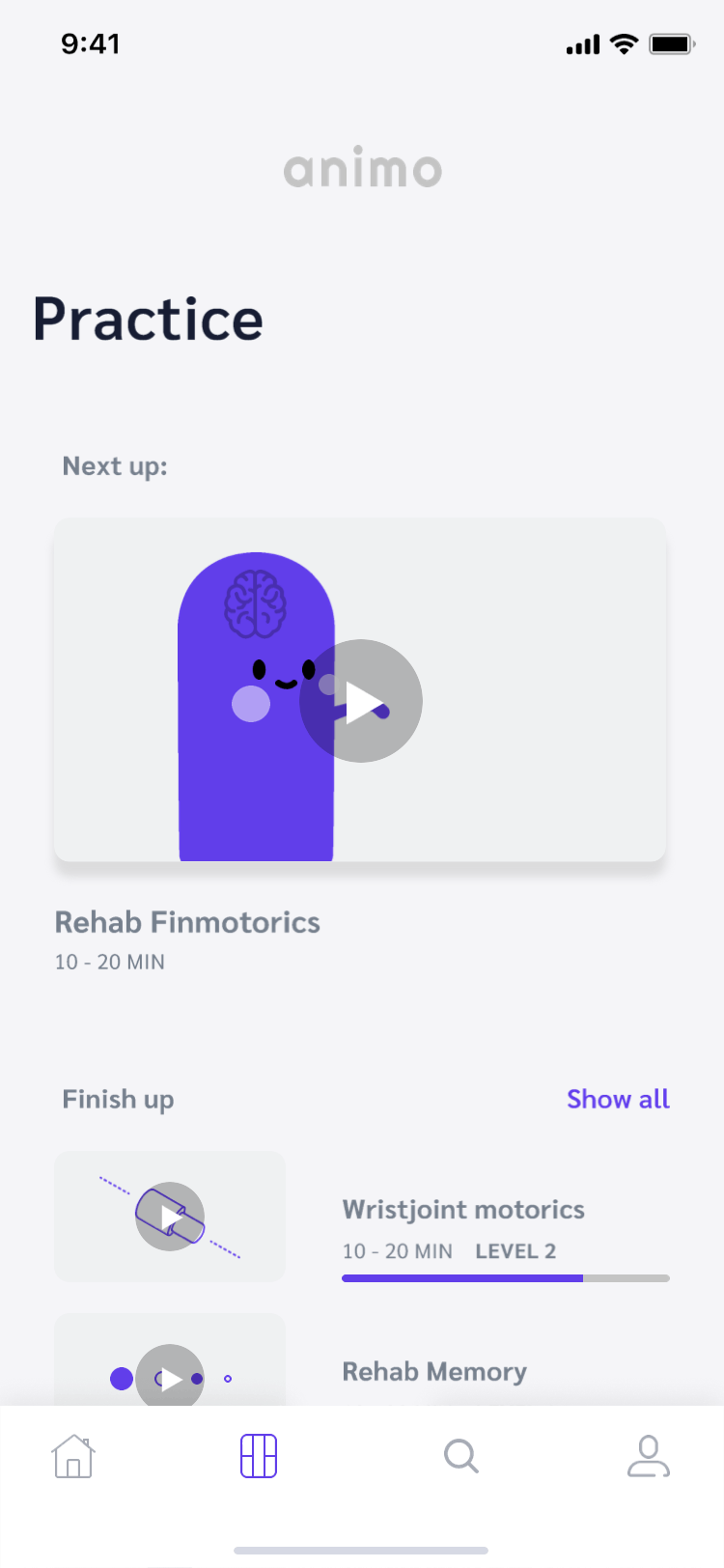
ANIMO
REHABILITATION GAME FOR STROKE PATIENTS
It is an interactive physical rehabilitation game supported by a training system in an app. You have five different practice boxes that you pick out at the rehab center. The app guides you and the AR assistance helps the patient to self-regulate its movement.

animo
A home rehabilitation tool for young stroke patients.
| Client: Norrlands hospital
| Project: Individual
| Timeframe: 10 weeks
| Process: Research, Concept, Shape study, CAD, Keyshot, Graphic assets, User Interface, Prototype, Video production and After Effects.
| Awards: iF Award 2020, Global Grad Show 2020, Ung Svensk Form

Challenge
Stroke is today one of the most common causes of death in the world. It costs the Swedish society 8 billion dollars yearly! Studies also show that stroke is something that is increasing among young adults. Of these, it is mainly women who are in the middle of life who are affected. Many of their activities and dreams are adversely affected by the disease. Healthcare professionals visit stroke patients and continue to support them. However, the real challenge starts at their home. ”How can we rehabilitate young stroke patients in their home environment?”
Result
Let me introduce you to a new rehabilitation tool called Animo. An interactive physical rehabilitation game supported by a training system in an app. The AR assistance helps the patient to self-regulate its movement. The patient can compare its result after a session to gain insight on how to improve.It is an interactive physical rehabilitation game supported by a training system in an app. You have five different practice boxes that you pick out at the rehab center. The app guides you and the AR assistance helps the patient to self-regulate its movement.

“How can we rehabilitate young stroke patients in their home environment?”


| Research & method

The goal is to be able to visualize a concept that uses motivation and insight as keywords for the patient's independent and continuous rehabilitation. Stroke varies a lot in its symptoms. To be more specific, I have looked more closely at obstacles in motor skills, finger grip, wrist joint, arm joint, shoulder, and cognition. The design process included ideation, workshops and visualization phases. During the ideation session, I created three concepts and received feedback from patients and staff. Then I narrowed down one concept and created low-fi prototypes and an interactive mobile prototype to understand what was important in the UI and how the dimensions of the game should feel.
“Stroke varies a lot in its symptoms. To be more specific, I have looked more closely at obstacles in motor skills, finger grip, wrist joint, arm joint, shoulder, and cognition”

| Interviews

For the method, I used conductive interviews with health staff at the Norrlands hospital. I also interviewed younger (23-28 years old) patients about their experience in recovering from a stroke and how they experienced rehabilitation at home and made the patient observation. During the ideation and visualization process, I initiated feedback sessions with both health staff and patients to get relevant input.




| Shape study

The main inspiration comes from game design and its best practices in engaging the user and make it a playful experience. During my research with both patients and health staff, I found that it is very important that the tools that are created for these patients need to be able to be adjusted over time since the patient's condition changes. The system needs to evolve with the patient's condition and the various symptoms they might have. I would like the rehabilitation tool and integrated system to be less stigmatized as health equipment for the patient.





| Final renderings
Rhino and Keyshot

| Guiding UI
Figma prototype and sitemap

Find your weekly courses next challenge or challenge a friend.